Things to Do in Sacred Valley | A First-Timers Travel Guide

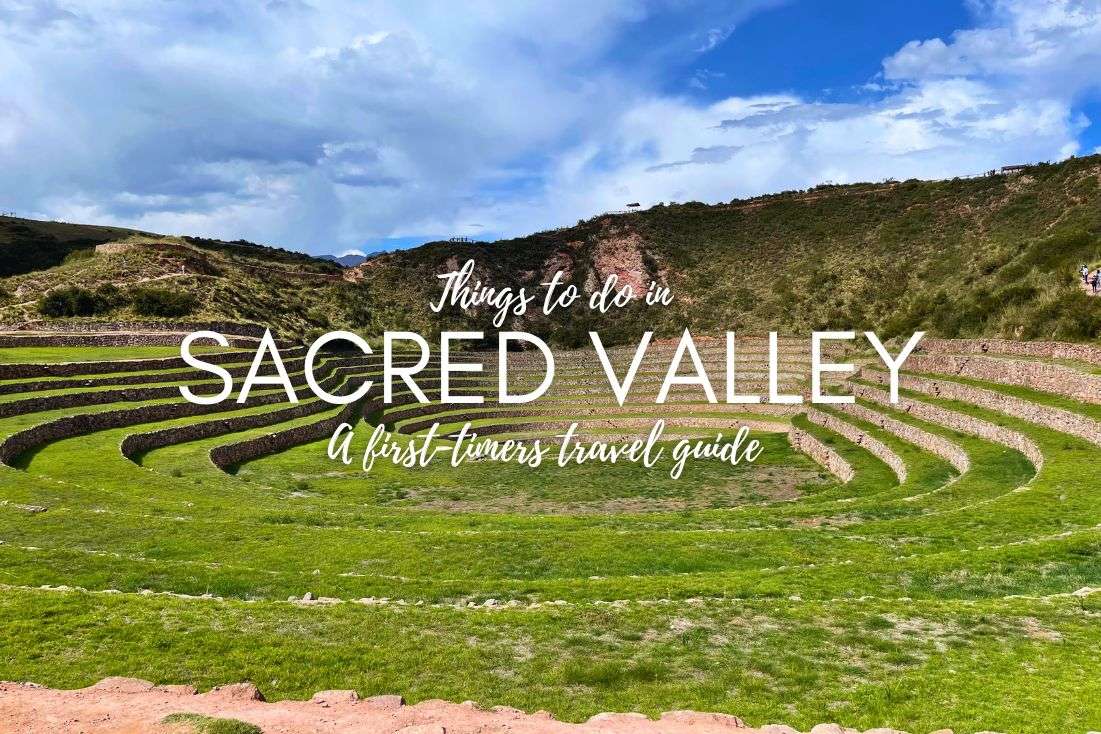
A lot of travelers use the Sacred Valley as a warm-up for the country’s main event: Machu Picchu. And yes, I totally get it—who doesn’t want to end their trip on a high (literally) note by seeing one of the New Seven Wonders of the World? But here’s the thing—don’t rush through the Sacred Valley like it’s a pit stop. It’s a destination in its own right, brimming with history, culture, and landscapes that’ll have your phone’s memory maxed out with photos.
Why do people visit Sacred Valley?
Picture it: ancient terraces cascading down mountainsides, picturesque villages where llamas roam like they own the place, and the kind of panoramic views of the Andean Mountains that remind you how tiny and insignificant you are (in the best way possible).
Stretching roughly 60 km (37 mi) between the charming towns of Pisac and Ollantaytambo, the Sacred Valley is an adventure waiting to happen. You can hike among the remnants of the once-great Inca civilization, sip on coca tea to help you adapt to the altitude, and maybe even spot a rainbow-colored mountain or two.
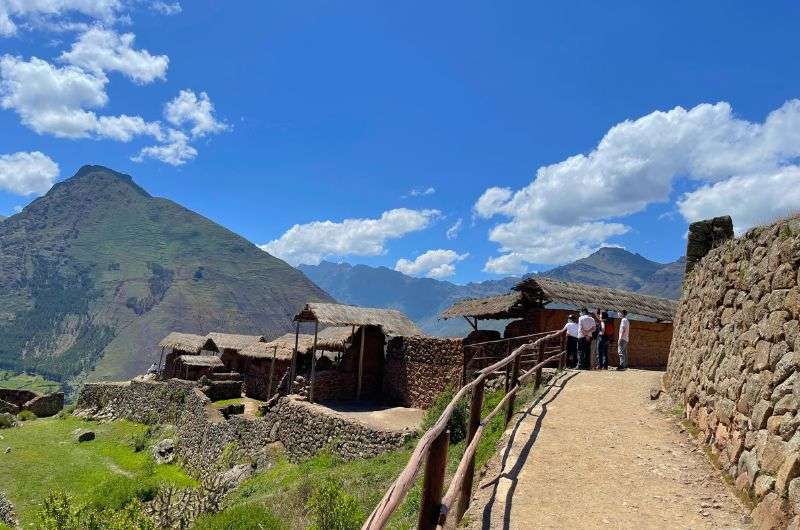
Because it’s so cool!
A quick list of the best things to do in Sacred Valley:
- Machu Picchu
- Rainbow Mountain
- Moray
- Pisac
- Maras (Salt Mines)
- Ollantaytambo
- Chinchero
- Humantay Lake
- Horesback riding in Sacred Valley
Sometimes, all you need to do is take the first step... I've filtered out the best hotels in Sacred Valley for you
Save it for yourself to come back to later, or share with your friends on social media!
I've already planned your ititnerary for the trip, complete with my travel tips.
Map of Sacred Valley Peru
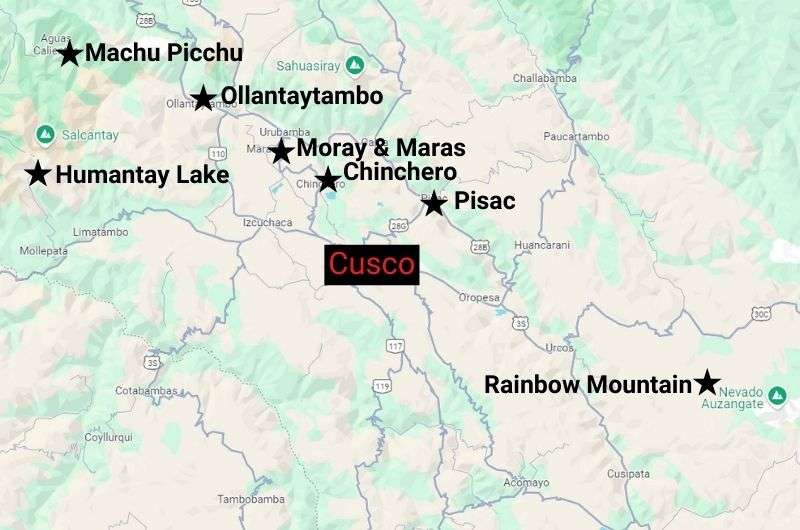
To give you a better idea
Is it worth visiting Sacred Valley?
The Sacred Valley NEEDS to be on your Peru itinerary. It’s a must-do. You’ll get the full package—Inca history, natural beauty, and a chance to slow down and breathe it all in (metaphorically and literally).
My top tips for visiting Sacred Valley:
- Acclimatize: Consider driving to Cusco instead of flying in, again to give your body a better chance of getting used to the high altitudes. At the very least, stop by Arequipa first and don’t fly directly from Lima.
- Prioritize: Stay in Cusco and Sacred Valley for at least 4 nights to beat altitude sickness before you head to Rainbow Mountain (or any other high-altitude destination).
- Count your days: Stay for longer than you think you’ll need simply because there is so much to see in Sacred Valley! Even without Cusco city and Machu Picchu, that’s a 2-night minimum!
- Leave the best for last: Even though Sacred Valley is amazing, make sure to visit Machu Picchu after Sacred Valley so the wow-factor keeps growing. It’s like the cherry on top.
- Have your documents with you at all times: Always carry your passport with you, you’ll need it when purchasing tickets and when showing your tickets each site.
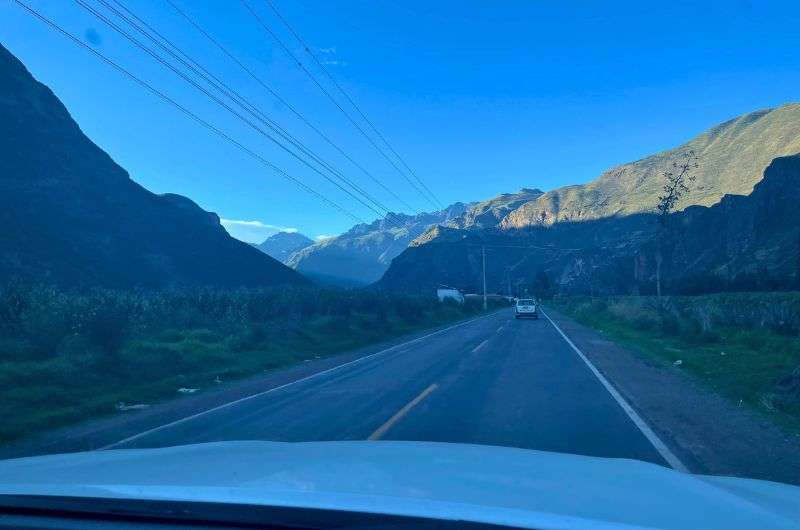
I recommend driving rather than flying to Sacred Valley and Cusco. Your body will adjust better to the significant change in altitude
Peru Sacred Valley hotels: A place to stay for every type of traveler
I’m not a backpacker by any means, but I have to say Sacred Valley has a range of accommodations to suit every preference. Whether you’re after a luxury escape or a convenient base for your adventures, you’ll find a place.
Here’s a quick guide to some of the best hotel options of the more comfortable kind:
- Hotel in Cusco: Because everyone will stay at least a night or two in this gateway to the Sacred Valley. I loved Hilton Garden Inn and think that in Peru, hotel chains are the way to go. Bonus points for the epic hotel restaurant!
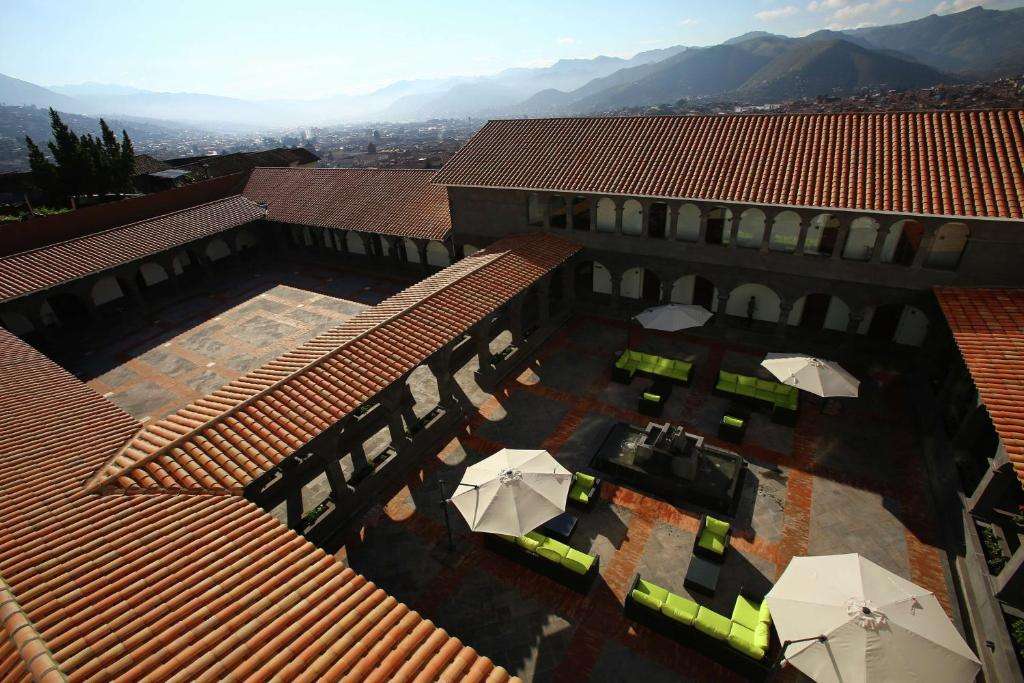
- Hotel in Ollantaytambo: A great option for basing yourself close to the train station for Machu Picchu. El Albergue Ollantaytambo is a 3-star hotel (because there are no 4-star ones) conveniently located right by the train station. It’s simple but stylish and clean.
- Luxury hotels in Sacred Valley: This is the top place in Peru for upscale options. Look at resorts and special places around Urubamba like Tambo del Inka, a Luxury Collection Resort & Spa.
And now, here’s my curated list of the top things to do in the Sacred Valley of the Incas!
1. Machu Picchu: A Wonder of the World!
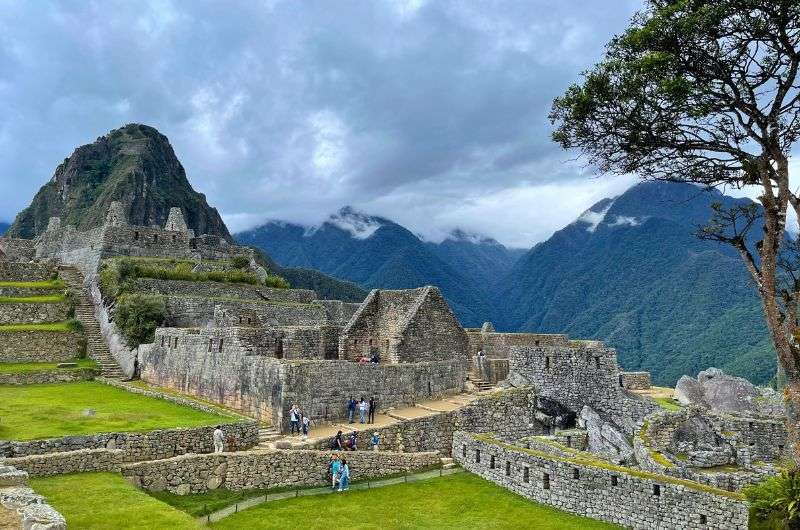
Machu Picchu
The lost Inca city of Machu Picchu doesn’t need much introduction; you’ve all seen the photos. These are the incredible Inca ruins of a massive city built atop a mountain with phenomenal views. And it’s not super easy to get to, either, adding suspense, adventure, and a whole lot of spending to actually witness Machu Picchu with your own eyes.
Is a visit to Peru’s top tourist site really worth it? A big, fat yes!
Why visit Machu Picchu?
Many people hike to Machu Picchu on the infamous Inca Trail, but that requires sleeping in tents, which isn’t something I’m fond of. I did, however, visit the archaeological site on my own, without a tour.
It’s pretty straightforward once you’ve read up on the logistics and ticket combinations, both of which can be overwhelming at first. But starting from Peru's Sacred Valley makes everything simpler. You’ll already be partway there and acclimatized thanks to the lower altitude compared to Cusco city.
Fun fact: Even though Machu Picchu feels like you’re on top of the world, it’s actually at a lower altitude than Cusco! Cusco sits at a lung-busting 3,400 m (11,150 ft), while Machu Picchu chills at a more manageable 2,430 m (7,970 ft). So, if you’ve been huffing and puffing around Cusco, you’ll feel like an oxygen superstar once you reach Machu Picchu—just another reason to hit up the Sacred Valley first and let those lungs adjust!
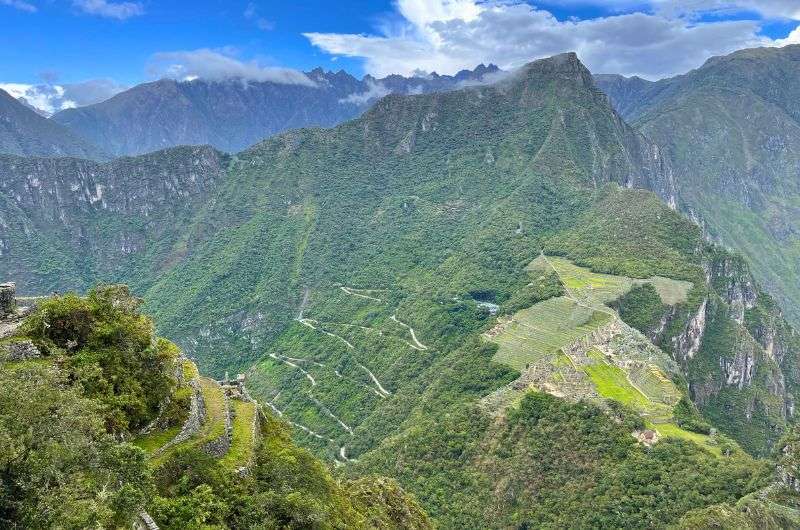
I guarantee that a visit to Machu Picchu is something you will never forget!
How to get to Machu Picchu: Train Routes, Tickets, and Hiking Options
In a nutshell, to get to Machu Picchu, you’ll be taking a 1.5-hour train from Ollantaytambo to Aguas Calientes, and a 20-minute bus from there to the actual archaeological site. All that will take half a day, and it isn’t cheap. But hey, it’s the price you pay for seeing one of the top archaeological sites in South America.
The train journey itself is incredible, following the Urubamba River as it snakes through the valley floor, offering views that make you realize why this area is called the Valley of the Incas.
Tickets to Machu Picchu
You’ll need to purchase your tickets to Machu Picchu up to 6 months in advance—that is if you’re visiting in high season (June to August). There are several ticket combinations for the Inca city visit plus one of three hikes to surrounding mountains.
The hike we took, Huayna Picchu, was steep, narrow, and a little hair-raising, but how else do you want to get those views of Machu Picchu and the valley floor below?!

Tip: Not sure when the best time for visiting Machu Picchu is? I have an article about that, too. See if you should avoid the wet season and why we think trying to get to Machu Picchu for sunrise is a waste of beauty sleep.

2. Rainbow Mountain: The ultimate high-altitude adventure
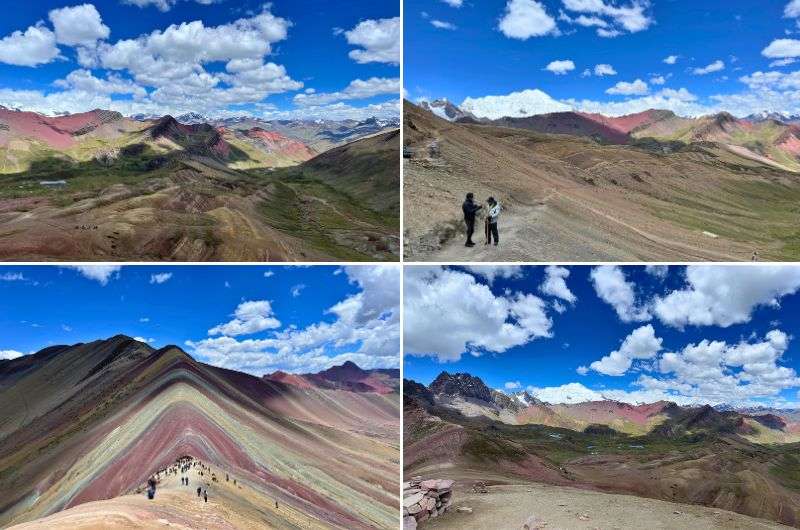
Experience a colorful hike to Rainbow Mountain
One Sacred Valley day trip that I certainly recommend—though only after proper acclimatization in the Sacred Valley—is Rainbow Mountain. The mountains have colorful stripes based on the minerals that prevail in each stripe, though they aren’t as bright as Instagram wants you to believe.
That’s okay, because yes, it is wonderful seeing a colorful mountain, but the challenge of getting there and the incredible scenery is what it’s all about. One look at the snow-capped mountains in the distance, like the sacred Ausangate Mountain, and you’ll be happy you took the trip. I was, even though I was battling mountain sickness, bad.
The experience: Is it worth the hike?
Absolutely, even if Rainbow Mountain is a challenge, as long as you’ve prepared for the altitude, you have to see it. While the hike would typically be quite easy at lower elevations, the thin air at Rainbow Mountain makes it feel like you’re summiting Everest (or at least that’s what I assume it feels like). The views, however, are totally worth it. When you reach the top, you’re rewarded not only with the mountain’s famous colors but also with sweeping views of the surrounding snow-capped mountains and the valley of the Incas below.
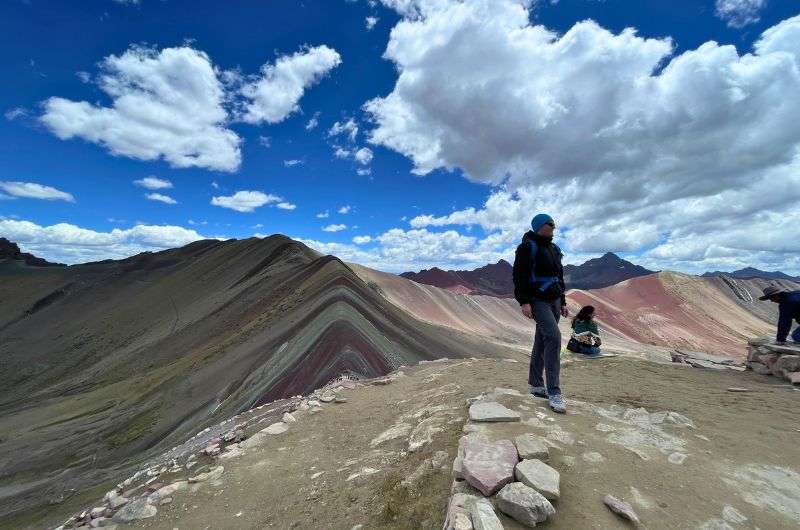
It’s a challenge but so worthy!
How to get to Rainbow Mountain: Routes and treks
The main route to Rainbow Mountain, the Cusipata trek, starts with a 3–4 hour drive from Cusco city. Most visitors head out early, at around 3 am, to reach the trailhead before sunrise.
The trek itself starts at a whopping 4,600 m (15,000 ft) and takes you up to 5,200 m (17,060 ft). It’s only about 3 km (1.8 mi) one way, but the altitude gain of roughly 400 m (1,300 ft) makes it a real lung workout. Be ready to chew coca leaves like a local, sip some tea, and snap photos while trying to look like you’re not dying inside.
There’s an easier way! Try Paccoyo
If the idea of altitude sickness (AMS) has you sweating already, consider the alternative Rainbow Mountain route at Palccoyo. It’s shorter, much easier, and takes you past three similarly striped peaks—all without the same lung-crushing effort. Perfect if you’ve been loving the relaxed vibes of Peru’s Sacred Valley and don’t feel like pushing it too hard.
I have a whole article on the different Rainbow Mountain routes, tips on avoiding altitude sickness, and prices for each option. Trust me—you’ll want to read it before you go charging up Rainbow Mountain unprepared.

3. Moray: Ancient ingenuity in agricultural terraces
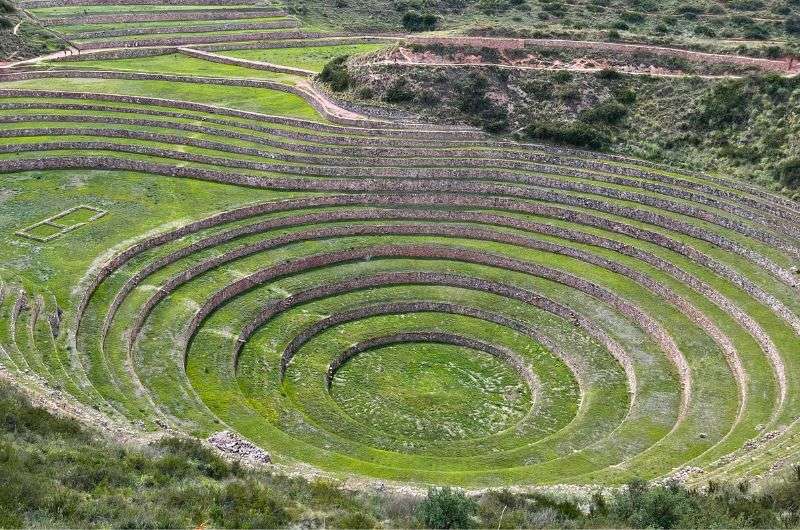
The extraterrestrial Moray
Another fascinating archaeological site, Moray is a giant experimental agricultural laboratory. The Incas created circular, terraced depressions where they would, through trial and error, grow different crops.
These agricultural terraces were constructed with the direction of the sun and wind in mind, creating microclimates with a temperature difference of up to 5°C (9°F) between the top and bottom levels—how’s that for ancient innovation?
What makes Moray special?
The Incas brought soil from different parts of Peru to mimic various conditions across the levels, making each terrace its own little ecosystem. Of course, the Incas being the masters of irrigation they were, they also set up a water system to feed the terraces from the surrounding mountains. The engineering is so advanced, you’ll start to wonder if these folks were time travelers.
There are 3 different circular terraces at Moray—feel free to walk around all of them and try to wrap your head around the genius of the Inca civilization. You’ll need about 30 minutes to explore the whole site. The scenery, as usual, is stunning, with the Urubamba River and the valley of the Incas serving as the backdrop.
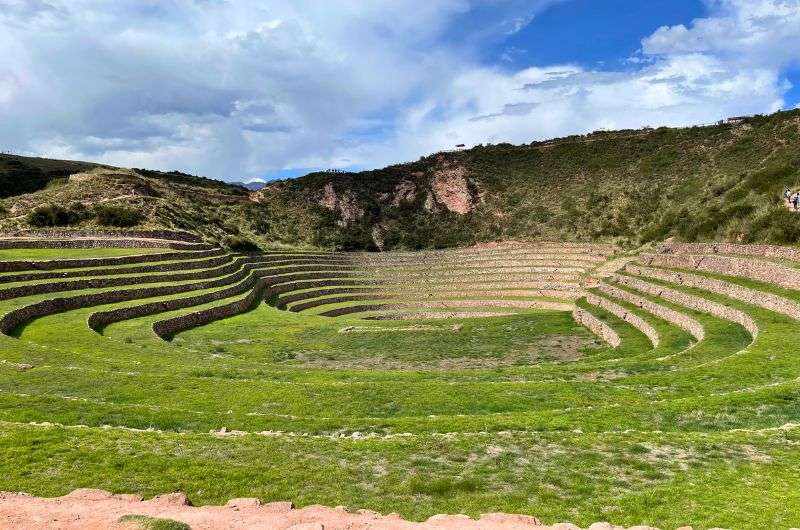
The circular terraces of Moray
How to visit Moray
The Moray site is about 50 km (31 mi) northwest of Cusco city, so plan for a full morning or afternoon visit, especially if you want to pair it with a visit to the salt mines at Maras right next door.
Moray is part of the Cusco Tourist Ticket. Check out my article about how to visit Moray and the nearby Maras salt mines on a self-guided tour for details:

4. Pisac: Stunning views and Inca ruins worth the climb
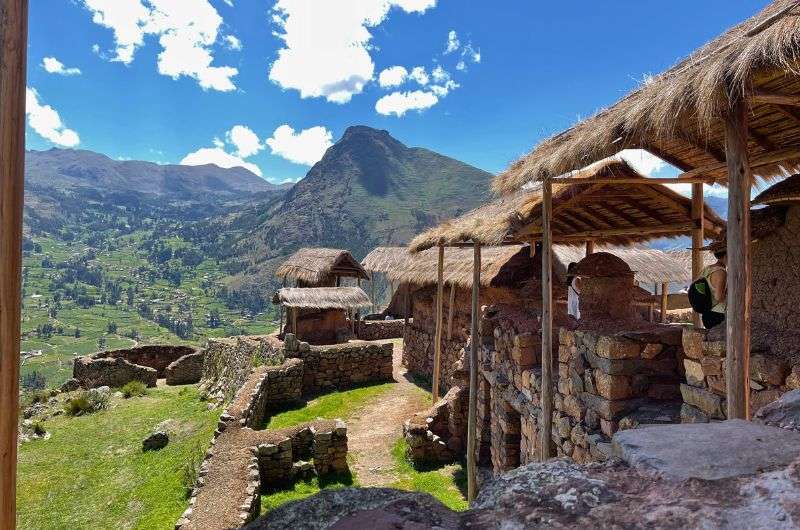
The Pisac Inca ruins
I know I’ve mentioned great views throughout this article about a bazillion times, but the views at Pisac one-up everyone else. They are spectacular! Pisac is a former Inca fortress that sits at about 3,000 m (9,800 ft) above sea level, so it’s like you’re getting views of the views—they’re just phenomenal.
This archaeological site likely served as protection for the Sacred Valley from the east, just as the Ollantaytambo ruins guarded it from the west.
For me, the views are the reason to go to Pisac, and there just happen to be Inca ruins there as a bonus. They’re nice, but after a few archaeological sites, you might start feeling a little numb to them. Still, Pisac is so photogenic and memorable that I’m saying you should definitely go—for the views especially. They’re second only to Machu Picchu itself.
How to get to the Pisac Inca ruins
The ruins aren’t in Pisac town directly. The archaeological site is about 3.5 km (2.2 mi) north of town, so it’s best to have your own car or at least a driver for the day to take you there and back.
Otherwise, you can take the 2-hour trek out of Pisac town on your own two feet. It’s steep, but hey—more bragging rights when you reach the top and soak in those views!
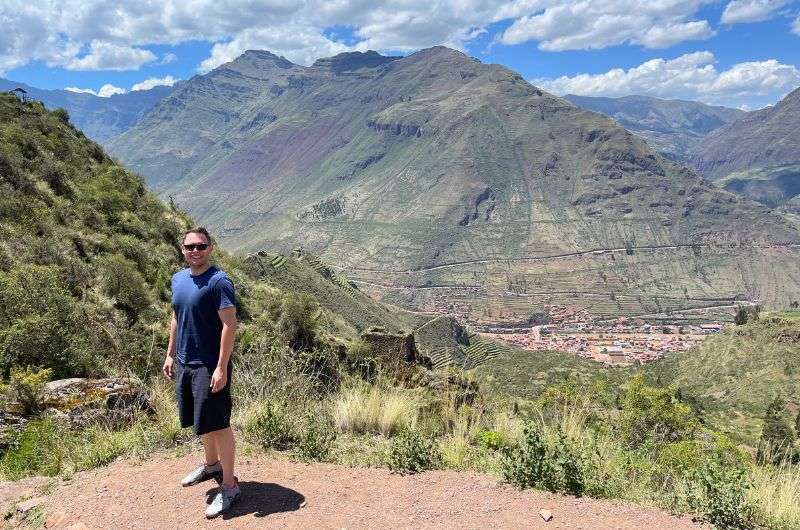
Hard hike up but the views will take down the pain!
Exploring the Pisac market and town
Besides the Inca ruins, you also have the chance to visit Pisac town itself and get a taste of rural life in Peru. Be prepared—it’s popular with tourists, so it’s not exactly a hidden gem. But it’s still a charming spot, and if you time it right, you can visit the Sunday market. It’s a bit touristy, with stalls selling souvenirs and handicrafts, but you’ll still see locals from nearby villages doing their thing.
If you’re in the mood for a more traditional market experience, stop by Chinchero instead (see below). You’ll need around 2 hours at the Pisac ruins, plus extra time for exploring the town if you like.
5. Maras: The stunning salt mines of the Sacred Valley
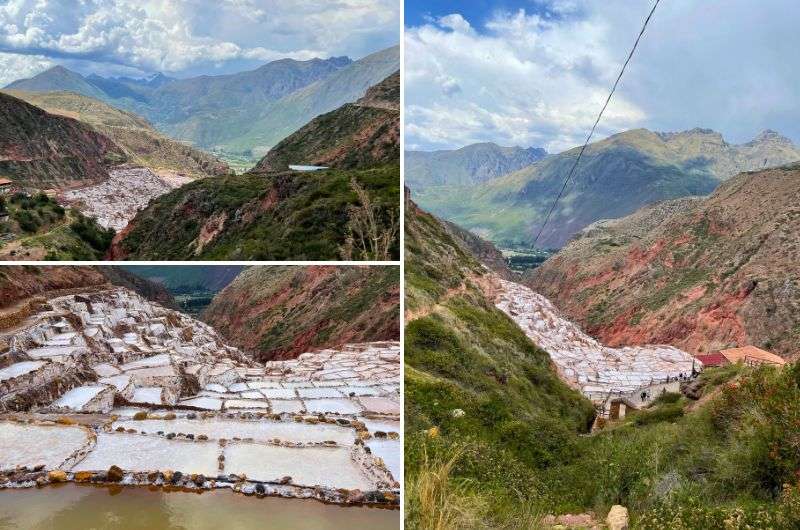
The salt mines in Mara
Maras is a whole side of a mountain filled with thousands of salt evaporation pools. It looks like a massive rice terrace area that got snowed on—there are thousands of them! The Incas originally constructed the site, and it’s still actively used today by local families to mine salt using the same ancient techniques.
The history and process behind the Maras salt mines
There’s a salty underground stream that runs through the area, and the Incas figured out how to gather the water and channel it into the sunny mountain slopes of Maras. As the water evaporates, it leaves behind layers of deliciously salty goodness. And of course, the process isn’t a one-time deal; the pools are filled and evaporated repeatedly, with workers scraping off the salt at each cycle.
The first salt layer is high-quality table salt, either white or pink in color. The next layers are white but lower in quality, and the final layer is used as industrial salt—it's not as pretty, with shades of brown. The whole site is a brilliant showcase of the Inca Empire’s resourcefulness, and it’s amazing to see such an ancient tradition still thriving today.
How to visit the Maras salt mines
Parking is easy at Maras, and you buy a ticket at the entrance for PEN 10 (USD 2.75). Maras is not included in the Cusco Tourist Ticket, so bring some cash with you. Then, off you go!
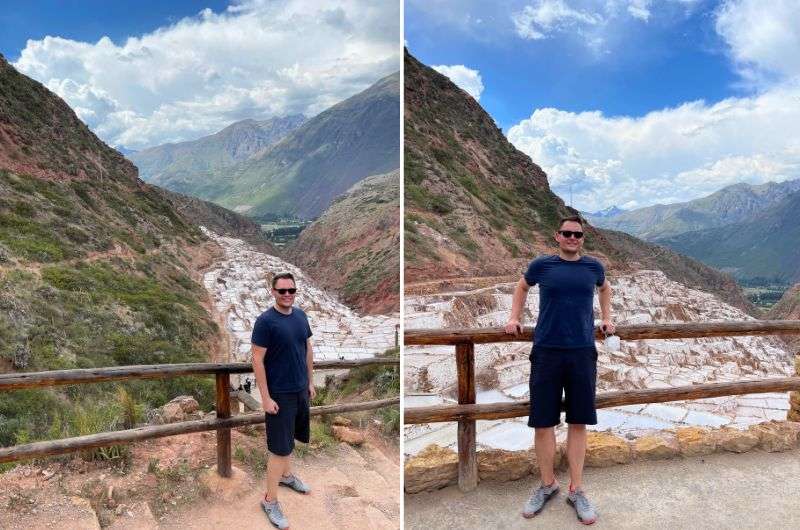
You can't walk between the salt pools, but you can get a very good view of them from the viewing platform. Look!
While you can’t walk through the salt pools themselves (bummer, I know!), there are viewing platforms and walkways that take you to several different levels, giving you great photo ops of the site.
Set aside about 30 minutes to explore the salt mines.
Tip: Pair your visit to Maras with a trip to Moray since they’re close by and make for an epic combo of agricultural terraces and salt mines—a true taste of Andean culture in Peru's Sacred Valley.
Getting to Maras and what to expect
To reach Maras, you’ll need to head about 40 km (25 mi) from Cusco city. Most people include it as part of their Sacred Valley tour, hitting up other archaeological sites like Moray on the same day. (Moray is a 20-minute drive away.) If you don’t have your own wheels, book a tour or a driver for the day, because getting a return ride from the salt mines isn’t as easy as you’d think.
The surrounding views are, no surprise, incredible. You’ll have the valley of the Incas as your backdrop, with the Urubamba River winding through the landscape below. It’s one of those spots where history and nature blend perfectly, making it a must-visit on any trip to South America.

6. Ollantaytambo: More than just a train stop to Machu Picchu!
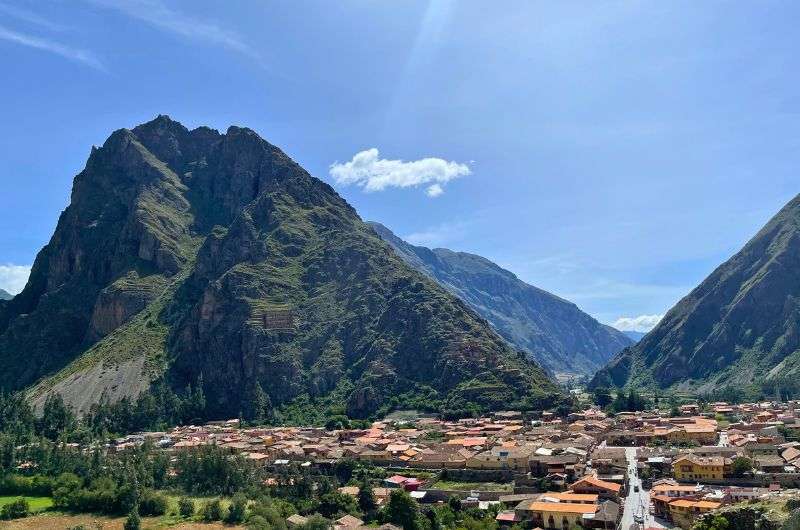
Ollantaytambo
Ollantaytambo is known as the place where you catch the train to Machu Picchu (because, fun fact, there are no roads leading into Aguas Calientes). But here’s the thing: Ollantaytambo is so much more than just a transit point. The Inca ruins here are some of the best-preserved in all of Peru, and they’re massive—possibly even more expansive than the ones at Machu Picchu itself.
Exploring the Ollantaytambo ruins
The ruins at Ollantaytambo are built into the mountain terrain, so get ready for some serious climbing. But hey, you know what climbing gets you? Views! And these views are totally worth it. The agricultural terraces and the steep stone steps reveal incredible panoramas of the valley floor and the Urubamba River winding below.
The Incas weren’t messing around when they built this place. The Ollantaytambo ruins served as a strategic Inca fortress, protecting the Sacred Valley from invaders. The terraces, aside from looking dramatic, were used to grow crops that otherwise wouldn’t thrive at this altitude. And because it was a full-on city, you’ll also find storehouses, quarries, and defense walls, making it a fascinating archaeological site to wander around.
The most impressive part? The Wall of the Six Monoliths. The stones used for this structure were moved 6 km (3.7 mi) from a quarry on the opposite mountain. Just imagining the logistics and strength involved—without modern machinery—is mind-blowing.
If you want more details, hiring a guide at the site is a solid choice, but you can also just explore at your own pace.
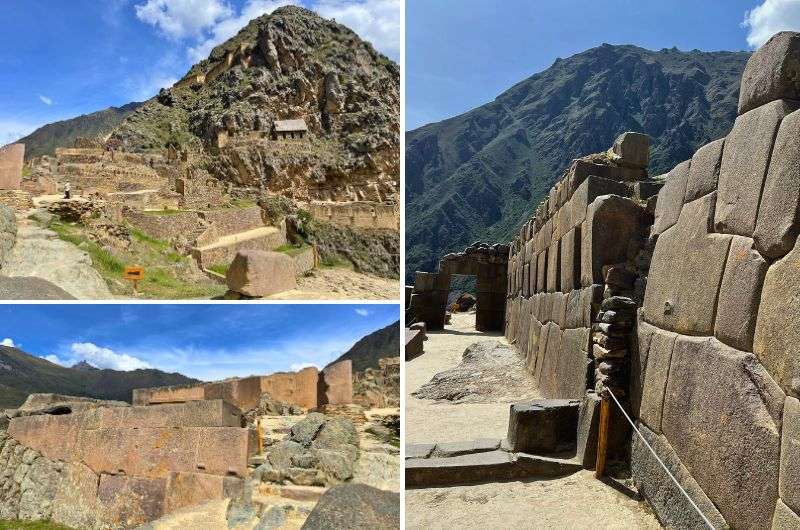
Exploring Ollantaytambo will take you around 1-2 hours
How to visit and what to expect
A visit to Ollantaytambo will take you 1–2 hours, depending on how many other Inca ruins you’ve seen before this. If you’re already feeling over-Inca’d, no worries; the climb and the views alone make it worth the stop.
Ollantaytambo is part of the Cusco Tourist Ticket, so make sure you have your ticket and passport ready to explore one of the most impressive sites in the valley of the Incas.
If you’re staying overnight in Ollantaytambo, you’ll get the added bonus of exploring the ruins either early in the morning or late in the afternoon, avoiding the crowds who are mostly there to catch the train.
The town itself is charming, with cobblestone streets and ancient water channels still in use, giving you a real taste of Andean culture. Whether you’re there for the history or just as a quick pit stop on your way to Machu Picchu, Ollantaytambo has plenty to offer.
7. Chinchero: The birthplace of rainbows and traditional markets
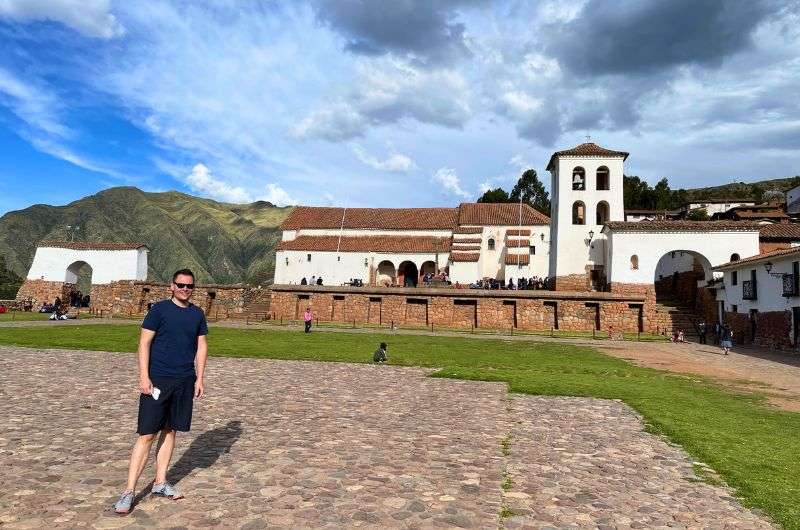
Lovely village of Chinchero
Ever wondered where rainbows come from? Well, you’re in luck—Chinchero claims to be the birthplace of the rainbow! No idea why, but hey, it’s not why you visit Chinchero anyway, so let’s move on.
This picturesque town, sitting at a respectable 3,765 m (12,352 ft), is about 30 km from Cusco city and is one of the best spots in Peru's Sacred Valley to soak up authentic Andean culture.
What to do in chinchero: markets, weaving, and colonial charm
The main reason to visit Chinchero is its vibrant Sunday market. The locals (often in traditional dress) sell everything from fresh produce to handmade textiles using ancient weaving techniques. If you’re in the mood for souvenirs, this is the place to grab an alpaca sweater or a colorful poncho that’ll make you look like a traveling pro on Instagram. Just remember, it’s a popular spot, so you’ll be sharing it with fellow tourists.
Speaking of weaving, Chinchero is famous for its skilled artisans. You can even take a weaving class if you’re curious about how they create those intricate patterns.
Or, if you’re more into sightseeing, check out the colonial church built on top of Inca foundations—a classic example of history blending with history. It may not be as spectacular as some of the other sites in the Sacred Valley, but it’s a great snapshot of the Spanish influence in South America.
Exploring Chinchero’s Inca ruins
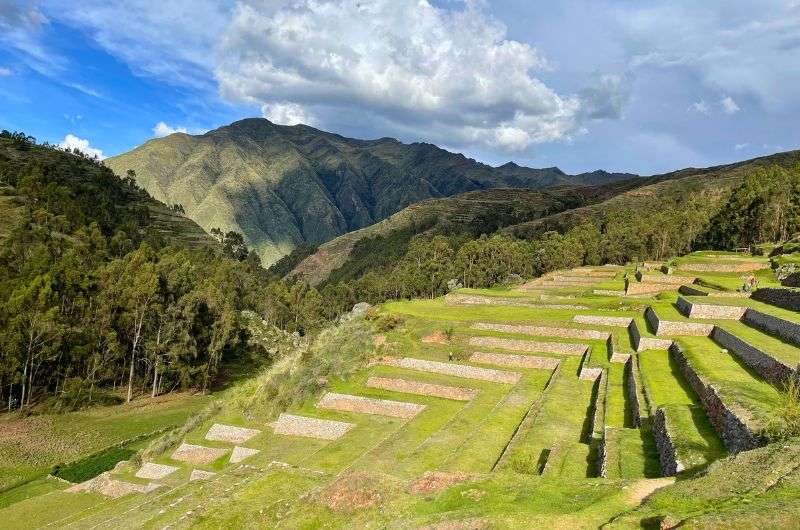
And in Chinchero, more remarkable Inca ruins
There are also terraced Inca ruins at Chinchero that feel totally off-the-beaten-path compared to the more popular sites in Peru’s Sacred Valley. You’ll likely have them to yourself, which is a nice change of pace if you’re a little Inca’d out at this point.
These ruins are located on the north side of town and offer a peaceful atmosphere and more of those great mountain views.
Chinchero is included in the Cusco Tourist Ticket, so you can explore the main plaza, the colonial church, and the Inca ruins all with one ticket.
8. Humantay Lake: A day trip to a turquoise gem high in the Andes
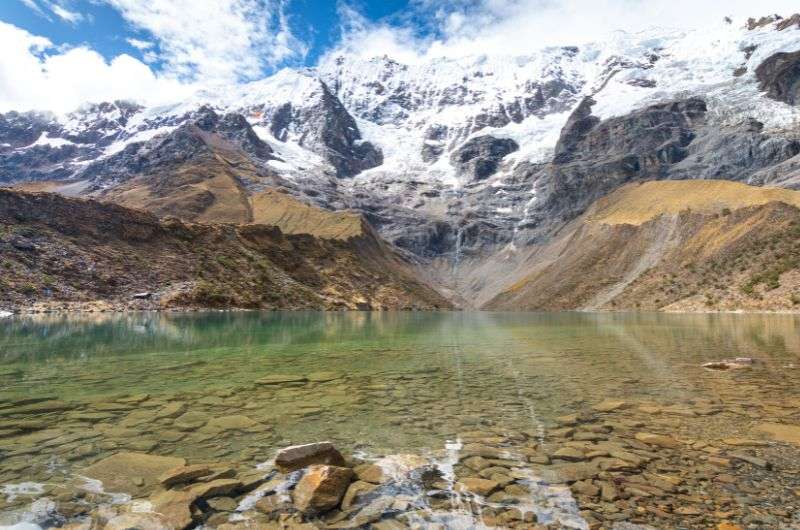
Beautiful green-blue Humantay Lake
Humantay Lake is a stunning green-blue lagoon surrounded by sharp, snow-capped mountains, located just outside the Sacred Valley. If you’ve been in Cusco city for even a day, you’ve probably seen offers for a day trip to this lake. One look at the photos and you’ll know why—it’s a beauty! The water is so clear and vibrant, you’d think it was photoshopped.
The humantay lake hike: what you need to know
The hike to Humantay Lake isn’t long, but it’s steep and at a high altitude, so it’s no stroll in the park. The trailhead is located in Soraypampa at 3,800 m (12,460 ft), and the lake itself sits at 4,200 m (13,780 ft). The 2.6-mile loop hike takes about 2 hours, but remember: you’ve got a 3-hour drive from Cusco to get there (and back), so it’s a full-day adventure.
Even though it’s not as high up as Rainbow Mountain, you can still experience altitude sickness, so spend a few days acclimatizing in the Sacred Valley before attempting it. I’ve all seen the brave (or unprepared) souls wheezing their way up, and you don’t want to be one of them.
You may also be interested in reading: What is Acute Mountain Sickness and how to prevent it
What to expect at Humantay Lake and tips for your visit
Humantay is absolutely worth the effort. You’ll be rewarded with views of the bright blue lagoon framed by the towering snow-capped mountains of the Andes. And if you find yourself out of breath (literally), there are mules available for a small fee to take you to the top. I mean, why not let the mule do the work while you enjoy the scenery? (I can’t, because I’m allergic to horses, but you are probably not.)
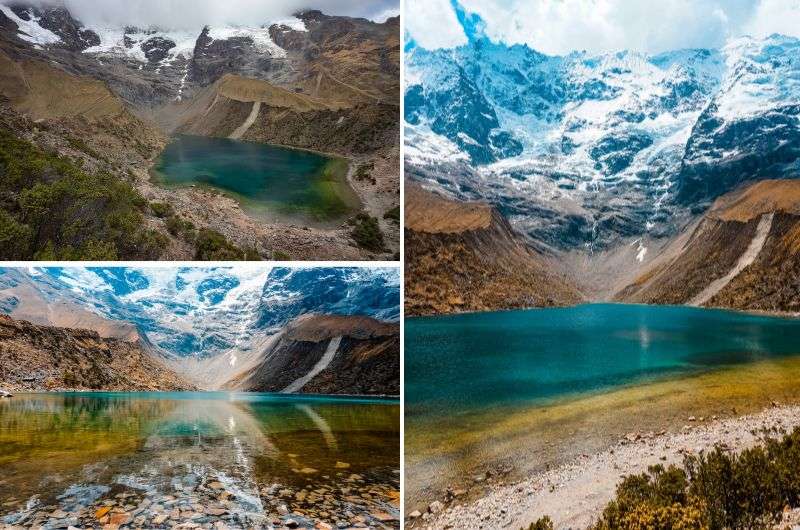
The hike to get to this stunning Lake isn’t too long
If you’re taking a tour from Cusco, most will pick you up at your hotel around 3 am. The early start might be brutal, but it means you’ll arrive early enough to beat the crowds (and get those clear reflections in the water). If you prefer to go solo, aim to get there later in the morning before the buses so you avoid the foot traffic.
The entrance fee is PEN 10 (USD 2.75), payable in cash at the checkpoint in Mollepata. Keep that cash handy—high-altitude lakes don’t take credit cards.
Tip: The lake is also a stop on the Salcantay trek, so if you’re planning that multi-day adventure, you can see Humantay Lake without the need for an extra day trip. More info about the Inca trail alternative in my other article:

9. Horseback riding: The easy way to explore the Sacred Valley
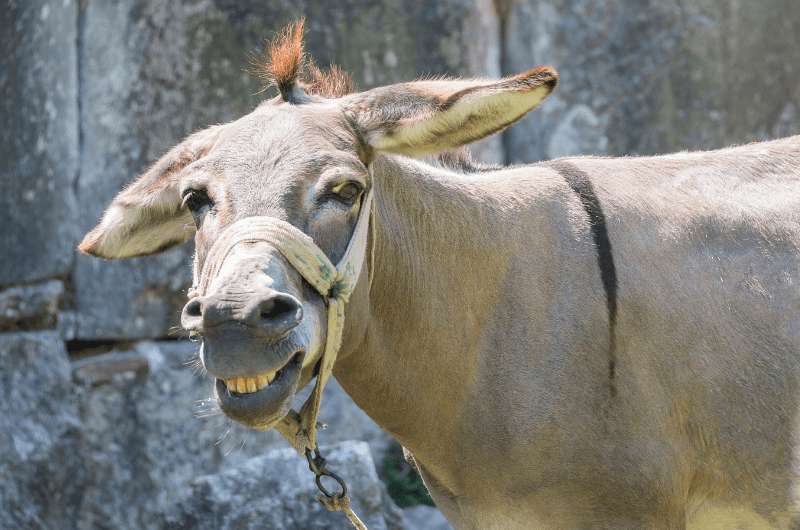
Mules are not as elegant as horses, but can still get you where you want to go
Ok, so this isn’t exactly a place, but horseback riding is a great way to experience Peru’s Sacred Valley if you’re not feeling up for all the hiking. Delegate the hard work to someone else—like your trusty horse—while you sit back and let the valley’s scenery unfold around you. Sure, I’m allergic to horses, so I’ll be cheering from the sidelines, but for those of you without equine allergies, this could be epic.
Tip: My horse allergies are also the reason we couldn’t accept the offer of mules helping tourists up the Rainbow Mountain trail. I seriously considered it when my head was pounding from altitude sickness, but ultimately decided I didn’t need to add horse allergies to my problems list. But if you’re not allergic, lucky you!
Exploring the Valley of the Incas on horseback
We’ve already established that the Sacred Valley is ridiculously beautiful. And while hiking is great, you can only cover so much ground on foot. Enter horses—a chance to literally sit back and soak up views of the valley, the Urubamba River, and distant Andes mountains. It’s a laid-back way to experience the landscapes, with a little Andean culture thrown in.
If you’re worried about experience levels—don’t be. Most horseback riding tours in the Sacred Valley are beginner-friendly, though some of them do require you to be an “adventurous beginner.” Why? Because even though you’re just sitting there, the horses often take you up steep paths and sometimes very close to the edge of cliffs, which can be…thrilling. Let’s call it an adrenaline rush with a view.
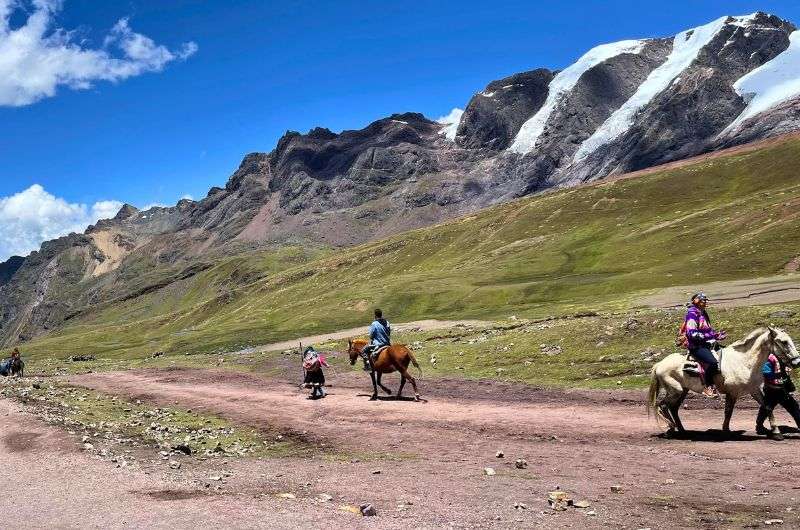
This is actually a pretty exciting way to explore the Sacred Valley. Not for my allergies, though...
Horseback riding tours and pricing in the Sacred Valley
There are all kinds of horseback riding treks to choose from, ranging from 1-hour rides to full-on adventures that last several days. Popular options include 5-hour treks to Moray and the Maras salt mines, which take you through some of the most iconic parts of the valley of the Incas. Prices start around USD 80 for shorter rides and go up to USD 150–200 for the Moray and Maras routes.
If you’re feeling particularly adventurous (or just really like horses), multiday treks can go over USD 1,500.
Several ranches and tour operators offer these experiences. Some, like Frontierlab and Salineras Ranch, come highly recommended. They’ve got well-cared-for horses and knowledgeable guides who speak English, so you’re in good hands. Plus, they offer rustic cabins if you want to make a night of it and really immerse yourself in the Sacred Valley’s vibes.
Sometimes, all you need to do is take the first step... I've filtered out the best hotels in Sacred Valley for you
Save it for yourself to come back to later, or share with your friends on social media!
I've already planned your ititnerary for the trip, complete with my travel tips.
How long should you spend in the Sacred Valley?
You can do a quick, 1-day Sacred Valley itinerary that hits all of the main things to do: Pisac, Moray and Maras, Chinchero, and Ollantaytambo. It’s a long day and you’ll wish you had more time in some spots, but it’s doable. For a more relaxed Saced Valley tour and day trips to Rainbow Mountain and/or Huamantay Lake, you have to give yourself at least 2 extra days. I’m trying to remember people are coming to Peru with limited vacation days, so these estimates are the bare minimum. But that’s without another 2 days in Cusco city and 2 days at Machu Picchu! Yes, you need a week in Sacred Valley!
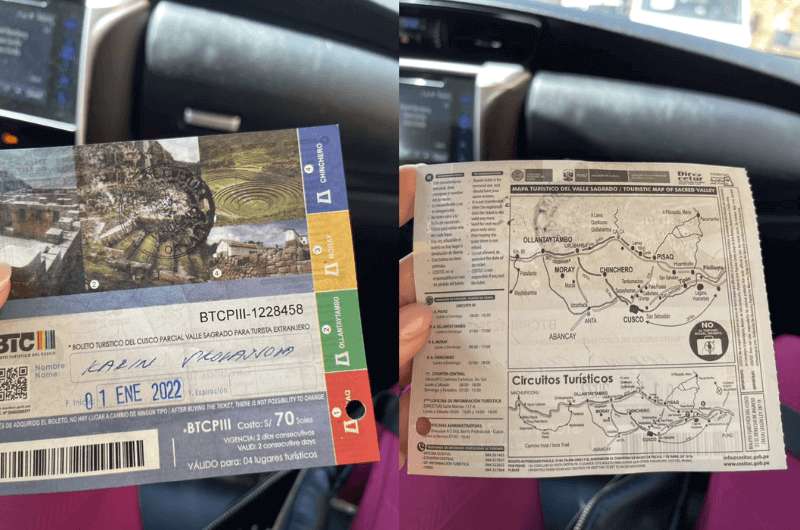
The tickets and map we got before visiting Sacred Valley
The Cusco Tourist Ticket (Boleto Turístico del Cusco) is basically your all-access pass to most of the most important archaeological sites and attractions in Cusco city and Peru's Sacred Valley. It’s offered in different circuits, allowing you to choose what best fits your itinerary and interests. Here's a quick breakdown:
- General ticket: This one covers 16 tourist attractions in and around Cusco and the Sacred Valley, including top sites in Sacred Valley and several museums in Cusco city. It’s valid for 10 days and costs PEN 130 (USD 35).
- Full list: Sacsayhuaman, Qenqo, Puca Pucara, Tambomachay, Museum of Contemporary Art, Regional Historical Museum, Museum of Popular Art, Qoricancha Site Museum, Qosqo Center for Native Art, Monument to the Inca Pachacuteq, Pikillaqta, Tipón, Pisac, Ollantaytambo, Chinchero, Moray.
- Full list: Sacsayhuaman, Qenqo, Puca Pucara, Tambomachay, Museum of Contemporary Art, Regional Historical Museum, Museum of Popular Art, Qoricancha Site Museum, Qosqo Center for Native Art, Monument to the Inca Pachacuteq, Pikillaqta, Tipón, Pisac, Ollantaytambo, Chinchero, Moray.
- Partial circuits: If you’re short on time or only interested in specific regions, these partial circuits are for you. They cost PEN 70 (USD 18.50) each and are valid for one or two days, depending on the circuit.
- Circuit 1 focuses on Inca sites around Cusco city: Sacsayhuaman, Qenqo, Puca Pucara, Tambomachay.
- Circuit 2 allow’s you to see Cusco city and its museums: Museum of Contemporary Art, Regional Historical Museum, Popular Art Museum, Qoricancha Site Museum, Qosqo Center for Native Art, Monument to the Inca Pachacuteq, Pikillaqta, Tipón.
- Circuit 3 covers key sites in the Sacred Valley: Pisac, Ollantaytambo, Chinchero, and Moray.
- Circuit 1 focuses on Inca sites around Cusco city: Sacsayhuaman, Qenqo, Puca Pucara, Tambomachay.
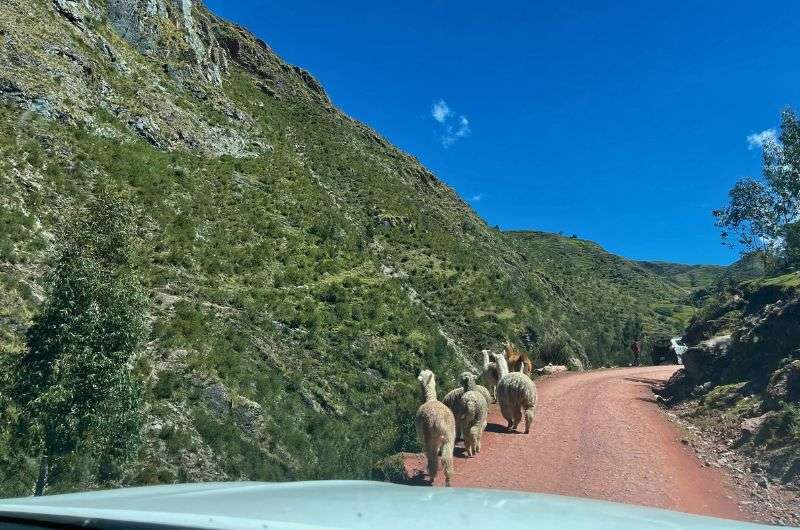
And don't forget to drive carefully in the Sacred Valley. Other vehicles you may see on the road might also be these alpacas
Important to know:
- You can only buy the ticket in person, either at the tourist offices in Cusco or at the entrances of the included sites.
- The ticket isn’t valid for every attraction in the region; for example, Maras salt mines require a separate entry fee.
- Always carry your passport, as you’ll need it to buy and use the ticket.
In short, if you’re planning to explore multiple archaeological sites and attractions in Peru's Sacred Valley, the Cusco Tourist Ticket is a convenient (and often cost-effective) way to access the best the region has to offer.
Altitude in the Sacred Valley, Peru
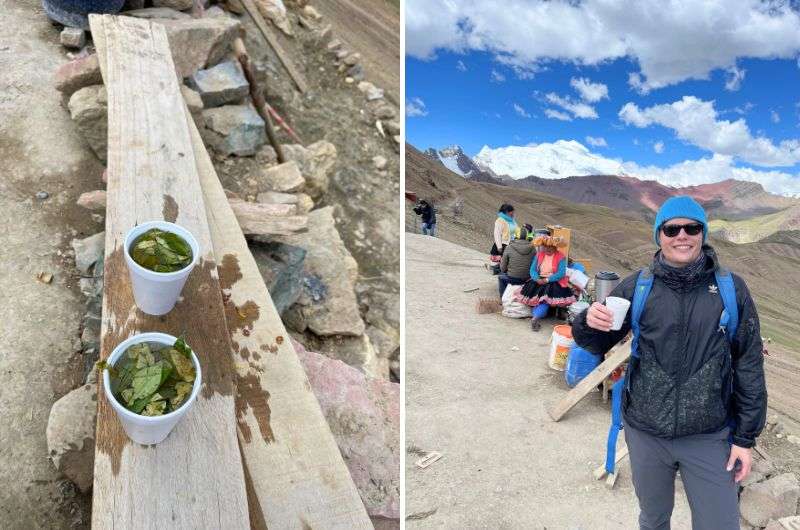
If you get dizzy from the altitude, remember that coca tea is here for you
The Sacred Valley in Peru sits at a lower elevation than nearby Cusco city, making it a great place to acclimatize before heading to higher-altitude spots like Machu Picchu or Rainbow Mountain.
The altitude of the Sacred Valley typically ranges between 2,000 to 2,900 m (6,560 to 9,500 ft) above sea level, depending on where you are.
For example:
- Pisac is around 2,972 m (9,750 ft).
- Ollantaytambo, one of the main stops in the valley, is at about 2,792 m (9,160 ft).
Compared to Cusco city, which sits at a higher altitude of 3,400 m (11,150 ft), the Sacred Valley offers a gentler introduction to Peru’s high elevations. This makes it an ideal base for you to adjust before tackling more demanding hikes or visiting higher-altitude archaeological sites.
Getting around Sacred Valley
I always have my own set of wheels when traveling, which makes logistics way simpler than if you’re relying on taxis or public transportation. I’m not big on organized tours, instead liking my own pace and no pesky strangers in the same vehicle with me.
If you are taking a taxi, always make sure to hire it for the day so the driver can wait for you at each site. If you just get a one-way taxi to Maras for example, you’ll be stuck at the salt pools forever since there will be no way to hail a taxi when you are done there.
Why is it called Sacred Valley of the Incas?
Sacred Valley was the spiritual base of the Inca Empire. The Sacred Valley, thanks to its lower altitude (than that of Cusco, the Inca’s home base), also allowed the Inca’s to grow crops they otherwise wouldn’t be able to, including the prestigious corn.
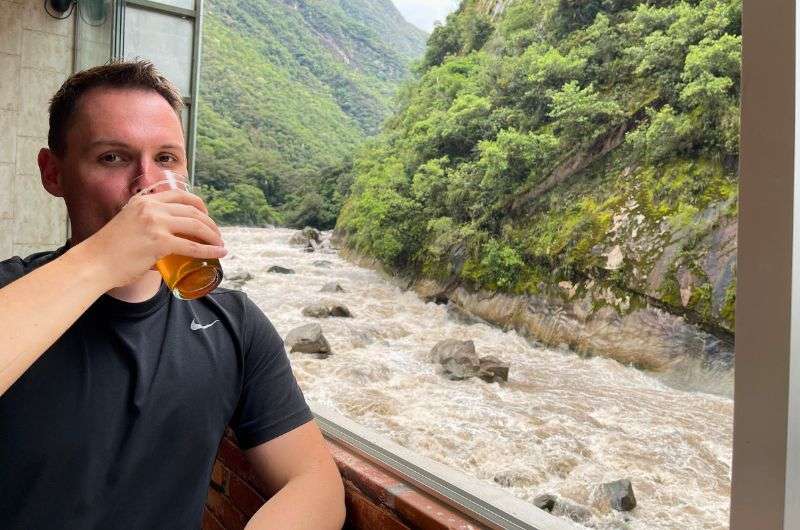
...and cheers to that!
Fun fact: And they used the corn to make beer! Chicha is a fermented maize drink the Incas drank frequently and in large quantities at numerous ceremonies and religious celebrations throughout the year. They would drink it out of the skulls of their enemies, and it apparently played a big part in establishing order and prosperity in the Inca Empire. I mean I love my beer, but it never felt as important as it does now.
Too bad that overall, Peruvian beer sucks—it’s the only country ever where I’ve outright disliked the beer. Read more about food and drinks in Peru.
This post contains affiliate links. I earn a small commission if you make bookings through my links, at no additional cost to you. Thank you for your support!






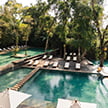
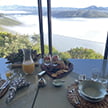
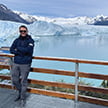

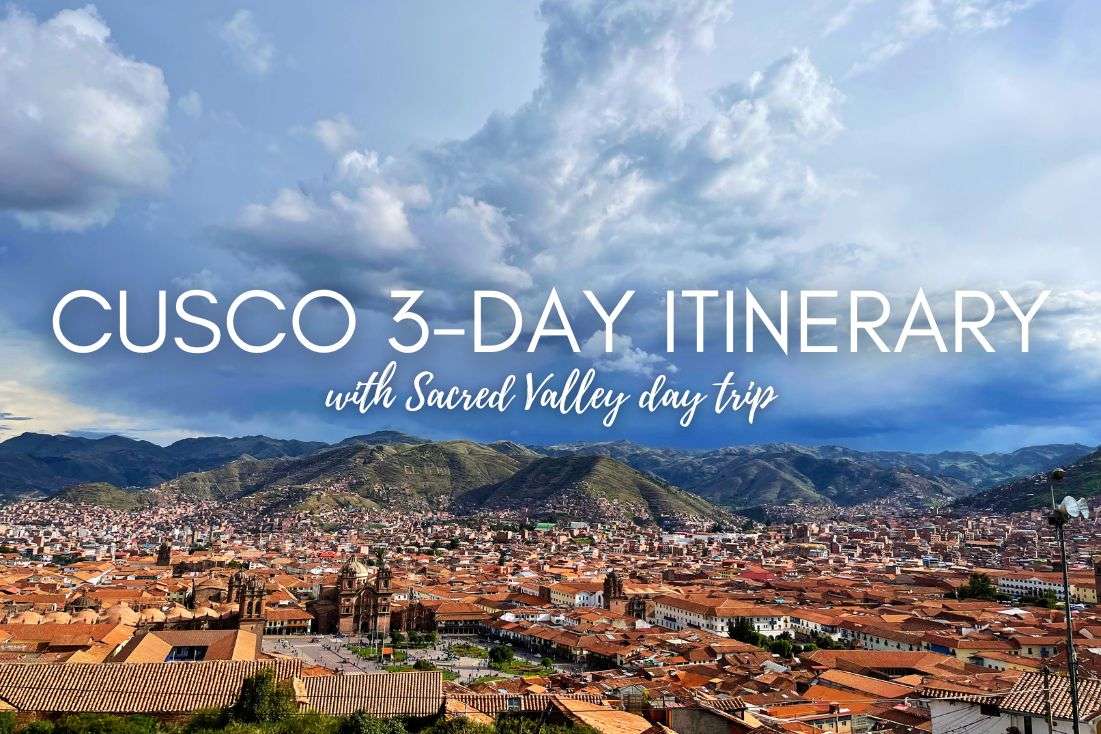
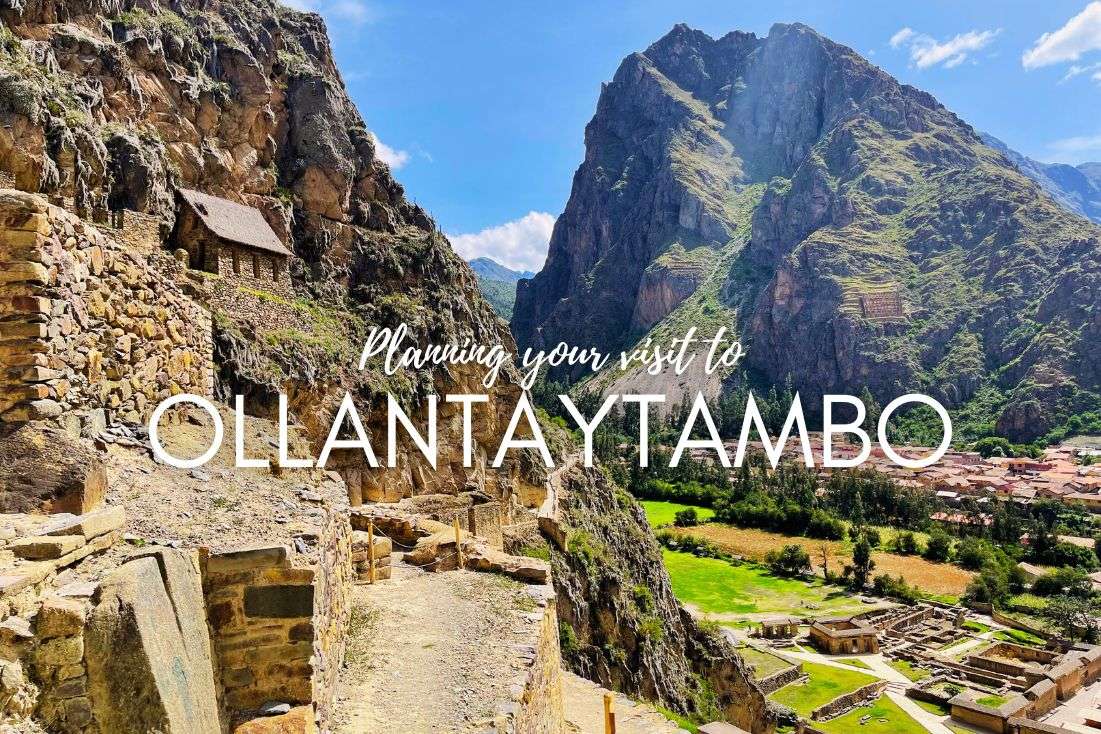
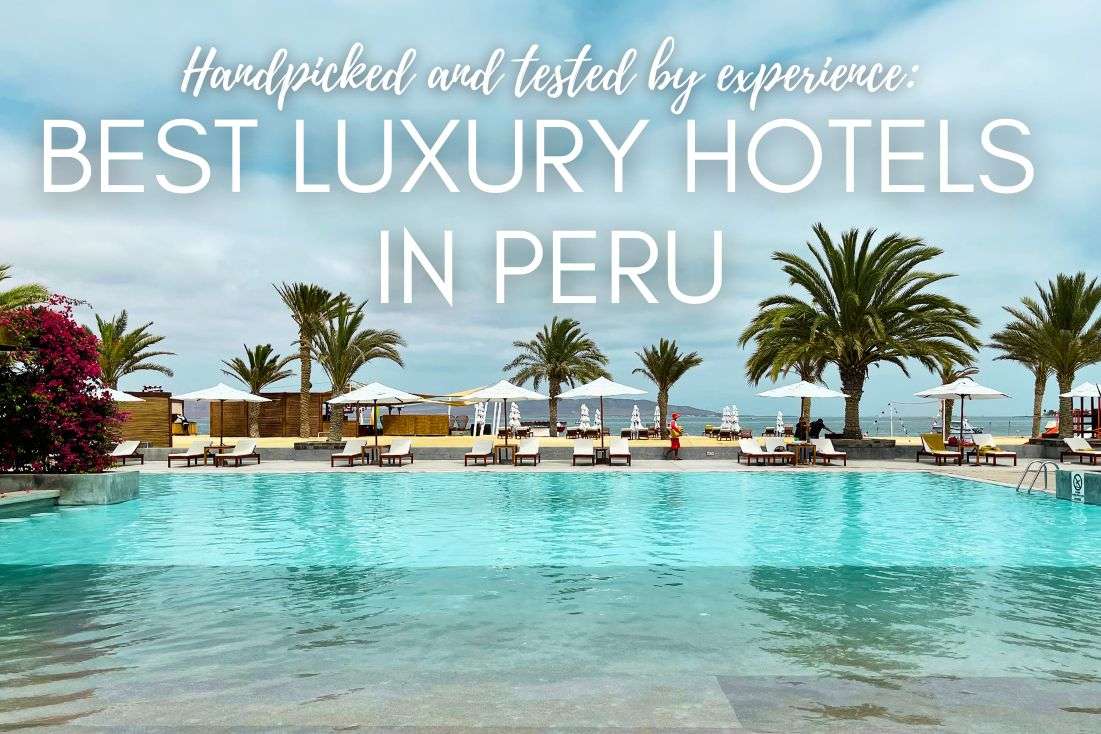



Comments | Thoughts? Give us a shout!